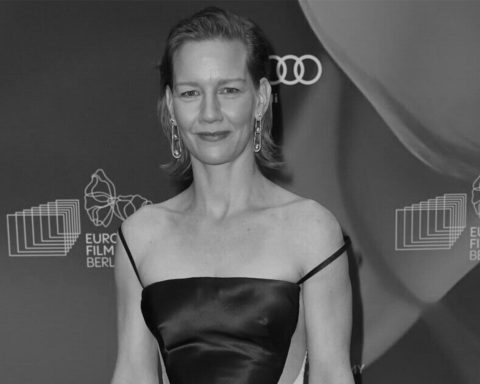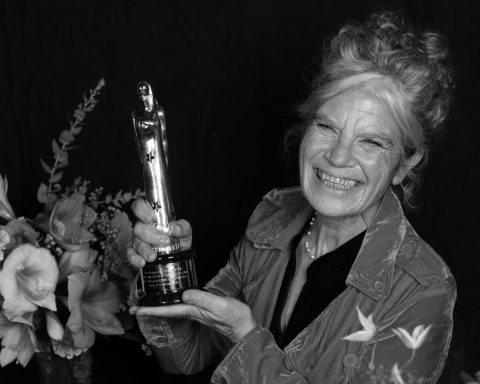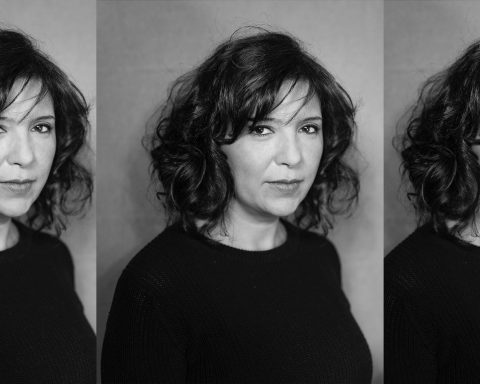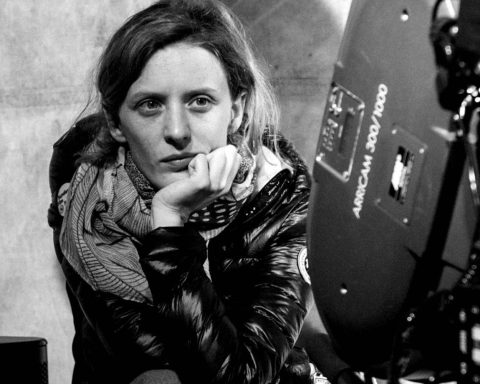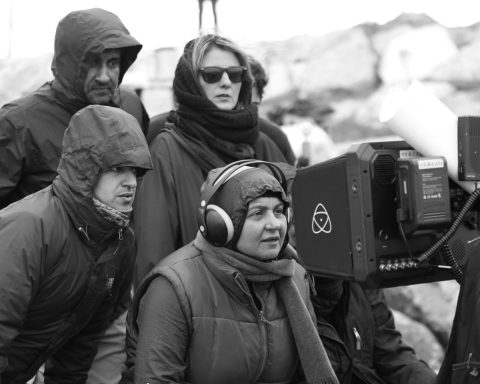Born in Rye, New York, writer/director/producer Justine Bateman has an impressive acting resume that includes “Family Ties,” “Satisfaction,” “Arrested Development” and more. In 1986 and 1987, she earned a Golden Globe and two Emmy nominations for her role in “Family Ties” and in 2004, she won a Golden Satellite Award for Best Actress in a Supporting Role in a miniseries or a Motion Picture Made for Television for her role in “Out of Order.” An advocate for Net Neutrality, Bateman holds a degree in Computer Science and Digital Media Management from UCLA. Her producing credits include “Easy to Assemble” with Ileana Douglas and Jared Drake’s Z. Bateman wrote and produced her directorial short film debut, “Five Minutes,” which premiered at the 2017 Toronto International Film Festival and was selected by seven more festivals, including the 2018 Tribeca Festival. The short was one of the winners of the 2019 Amazon Prime Video Direct Festival Stars Program and was chosen by both Short of the Week and Vimeo’s Staff Picks. Her follow-up short film is the drama “Push.” “Violet,” her directorial feature film debut of her own script, starring Olivia Munn, Luke Bracey and Justin Theroux, premiered at the 2021 SXSW Film Festival where it won the Grand Jury Prize, and is now having its international premiere at this year’s Toronto International Film Festival. Bateman has authored two books, “Fame” and “Face,” that were published by Arkashic Books in 2018 and 2021 respectively.
Tara Karajica talks to Justine Bateman about “Violet,” this pestering little voice inside our heads, women and Hollywood and what she is tackling next.
Why did you stop acting? Can you talk about your move from acting to writing and directing?
Justine Bateman: There was a point where I felt like things were shifting in my professional life, but I just kept going to auditions, but I suddenly couldn’t get a job from auditions – and I’m not exaggerating! At one point, I went five years without being able to get a job from an audition. I got a couple of jobs those years through friends offering me roles on Desperate Housewives and things like that, but it was really bizarre for me that I suddenly could not get a job off an audition. But at the same time, I was writing, and producing had exploded for me on digital media. It was very early in digital media – 2007-2008. So, I knew that writing, directing and producing was the direction I needed to go in, but I had been acting for so many years, so I think my life had to shut the door very firmly on acting in order for me to go completely into writing, directing and producing. If that had not happened, if that door had not shut, I don’t think I would have completely embraced the direction that I was supposed to go in. So, it took me five years to accept it. But that’s fine! And, at the end of those five years, I wound up going to UCLA and got a Computer Science and Media Management Degree, learned how to code and took a lot of Management classes. I was working in the digital space, spoke on panels and wrote and produced pieces. And then, when I came out of school, the timing felt like I was ready to start directing. So then, I directed two shorts and raised the money for Violet. It was a very strange transition because I didn’t realize how sharply my professional life had taken a turn. So, it took me a little while to let go of the acting thing when that shift happened.
How did Violet come about?
J.B.: Well, I wrote Violet in 2011. I wrote a batch of scripts all at the same time, so that was one of them and after I graduated from UCLA, I thought about what I would want my first film to be. I just thought: “Well, what if I only ever get to make one film – which I hope is not true – I want to make sure I get Violet out there.” I wrote Violet because in my past, I made many fear-based decisions and didn’t really realize that. When I did realize it, and then got away from the reasons why I was doing that, I finally got to become myself and I wanted to pass that on to people because this is the film I wish I had seen when I was nineteen years old, because I could have become myself faster than I did. So, I just wanted to make sure I got that out there. There are many other films I want to make, but that’s how I decided to do my first.
It’s very crowded in Violet’s head. I mean, there’s the demeaning voice, which is also a sort of invisible antagonist, and then, you have the scrawling on the screen, which is her other voice. Then, there’s the red screen and the buzzing. Then, there are the rapid-fire images of car crashes, dying animals and so on. And finally, her memories of riding a bike as a child. So, you make it a very visceral viewing experience and you take us on a journey of introspection. It’s not an easy watch for us who, like Violet, have critical thoughts. You found a very powerful way of showing us what’s going on in one’s head. Can you talk about these choices?
J.B.: Yes, thank you so much for recognizing that because I wanted the film to be an immersive experience for the viewer. To me, the most important character in this film is the viewer. I wanted them to be able to put Violet, to put the film on like a coat or get into it like into a car and go through the experience themselves so then, hopefully, by the end of the film, they too can recognize: “Oh, these critical thoughts I have are probably lies” and to then, in their own lives, go find out if that’s true. Maybe the thoughts that you have are saying: “Oh, don’t raise your hand in that meeting, or they’ll think that you’re bossy or that you’re stupid.” And then, what if you just try. What if you go: “Well, let me see if that’s true?” What if you raise your hand and you try and say and you find the response is much different than what the fear told you? Maybe people say: “Hey, that’s a great idea, Tara!” And, you keep doing that and then, you wind up getting a promotion. When the fear was telling you that the opposite is going to happen and somebody maybe criticized you, but somebody else in that meeting was like: “I really like her ideas, though!” and then, they leave the company to start a new business and they call you to come join them because they love the ideas you were saying in that meeting. So, that’s why I use all these audiovisual elements to pull the viewer in and hopefully experience it themselves so that they can have more freedom when they’re done watching the film.
One aspect that puzzles me is: why isn’t Violet going to therapy? This seems to be a very normal practice in L.A. and yet she struggles and deals with it on her own.
J.B.: A couple of reasons. First of all, cinematically, I find therapy scenes to be not cinematic and I just don’t find them very interesting to watch. I think what’s more interesting is what is going on inside the person as they change, as they become willing to do things differently even though it is terribly frightening to some people to do things differently. And yet, if you get to a point where the pain of staying where you are becomes greater than the pain of changing, then you’ll change. I found that only at that point will somebody make a change. And, I also wanted to show that this way of getting away from a life that has fear-based decisions to a life that has instinct-based decisions is something that is attainable whether you are going to therapy or not. It’s just a matter of being honest with yourself about what your irrational fear is, like writing it down or saying it out loud. And then, I find that only in doing that can your rational mind, then look at the irrational fear and decide: “Wow! I don’t think that’s really going to happen!” Bottom line is I didn’t want to. It never occurred to me to have a scene where Violet is talking to a therapist; it’s just not cinematic to me.
Can you delve into your experience with your inner voice? How much of it actually informed the script and what the film is now?
J.B.: Well, I did a lot of research for this film. I know this process backwards and forwards. The story of Violet is not based on my life, but rather I understand this human condition of realizing that you’ve made decisions based on fear, and how those decisions take you away from being your true self. And then, instead, instinct-based decisions are going to keep you on your track and help you become who you’re supposed to be. I found a way to do that is by being very honest about what your irrational fears are; what is it that you think is going to happen and writing that down. And then, sometimes just going and doing that thing anyway and seeing if that worst case scenario actually happens. And, in my experience, many times it just doesn’t and it makes you realize: “Oh my God! Wait a minute! All this time, I was thinking that there was something really bad behind the curtain” and then, you pull the curtain back and it’s just a brick wall. And, you’re like: “Okay, hold on. Now, I want to see more! I want to do more of the things that I want to do and not be afraid that something bad is going to happen!”
You portray Hollywood really honestly in Violet. Can you expand on that?
J.B.: The boss that she has that is not very nice, I personally have never had a boss like that, but I have met many people like that. I’ve had a great time in the entertainment business. I have not had those kinds of situations myself, but I have had those situations outside of the business. So, the film is set in the business, not because I’m making a comment about the business, but I wanted people to see this experience of handling your fear and your fear-based decisions with no reasons around you why you should be afraid. I didn’t want anyone to watch and say: “Oh well, I understand she doesn’t feel good about herself because she’s unhealthy and that is a terrible job in a town that is very depressing-looking” and I wanted them to say: “Why is this going on? She’s got a great job. She has a great career. She’s living in a really nice house. It’s not because there’s something going on around her that is making her feel that way,” and then hopefully in that way, others can say: “Oh, well then, if she can fix her situation, then I can fix mine, and it’s not because I’m living in this town, and there’s no way I can change what’s going on my head as long as I stay in this town. I can change my head without having to make all these other variables.” Sometimes, when people see that if somebody who seems to have everything has the same issue as them, it’ll give them more courage to change things in their own life because they’ll say: “Well, she has that problem too, so I’m not so strange or unique. I’m just like them and I can change my life as well.”
Talking about Hollywood, what is your take on the situation of women in film? Have you noticed any change in the past four years?
J.B.: I’ve only been directing for a couple of years so I can’t speak to what it used to be like to be a female director versus now. I only have my experience of the last few years in that area. When I was acting years ago, I didn’t happen to have these experiences these other women have had. That was just how it went for me. I’ve worked with some great men and women in Hollywood and I’ve had a very enjoyable career even with the five years where I couldn’t get a job off an audition. That was because my whole career was shifting and I was just still auditioning. I personally don’t focus on it. I personally don’t really care about sexism or misogyny because when somebody behaves that way towards me, they’re just telling me about themselves; they’re just telling me that they’re really insecure and that they find being around women to be really threatening. And then, like I just said, I go around them; I don’t want to do business with them because they seem too insecure to function properly, like they’re handicapped or something. Someone who’s misogynistic or sexist is mentally handicapped to me, and I think it’s best if I just don’t work with them and I go work with someone else. Of course, I’m talking about situations where you have a choice, and there are many situations where women don’t have a choice, so I’m not talking about that and I’m only talking about my experience. I just feel like: “I will get my projects done and I will find the right people to do them with. And, if somebody has this sort of insecurity that’s so deep that they can’t handle being around half the population, then I just try to avoid doing business with those people because I don’t think they’re functioning properly.”
Can you talk about working with Olivia Munn?
J.B.: When I’m casting, I’m always looking for some kind of element, some sort of personality trait or component of them that I can see that the camera catches that’s very obvious or very subtle that I can expand. And so, with Olivia, I had always seen this particular quality in her work that I wanted to expand, and when she came on the project, she really gave herself to the role and I was able to expand that element in her. I think she did a terrific job and her performance really goes well with all the other comments that I have in the film.
If I understand correctly, the writing on the screen is yours. Can you expand on that and your choice of graphics for the film?
J.B.: I didn’t plan on the handwriting at first, but like I said earlier, I wanted to make this a really immersive experience for the viewer. When I saw what should have been the final cut, I knew that it wasn’t quite there yet and I needed some component that really brought the audience into her passionate and inner desires to change, to triumph over this. I made a lot of collages as a child and young adult and I’d often write on my pieces and I’m a big admirer of the artists Peter Beard and Ed Templeton who often writes on his pieces too. It came to me that that was the element that I needed; I was like: “Oh, I know! I’ll just write it on the screen.” So, it became a natural choice for me. And also, because I just see making a film as making a collage, that’s how that came to pass. I handwrote all that with a Wacom tablet. Initially, there were a number of them that I made that we didn’t want to be using. I made 386 annotations and there are 124 in the final cut. I put them in a different location every time. I change the location or the width or whether it is going to be in one line or stacked and all that was intentional. And then, with the imagery, I wanted to illustrate how violent the negative thoughts actually are on our spirit, on our psyche that it’s better to get rid of them than to just brush them off and say: “Oh, I’m just hard on myself” because in my experience, even though it seems like a paper cut at first, it keeps cutting in the same place and before you know it, you have a gash inside yourself because you keep thinking the same thing. The image on the poster is from an artist named Archan Nair who’s from Berlin, and I’ve just liked his art for many, many years and I thought it’d be perfect for the poster!
What are your next projects?
J.B.: Well, there’s a couple I’m hoping to get going. One is a satire about 2020 an the other is a film adaptation of my book, Face, which is about women’s faces getting older and why that makes people angry. It’s forty-seven short stories, so the film would be fourteen of those stories, but I have to work at getting the money for that.
Photo credits: Steven Meiers Dominguez.
This interview was conducted virtually at the 2021 Toronto International Film Festival.






